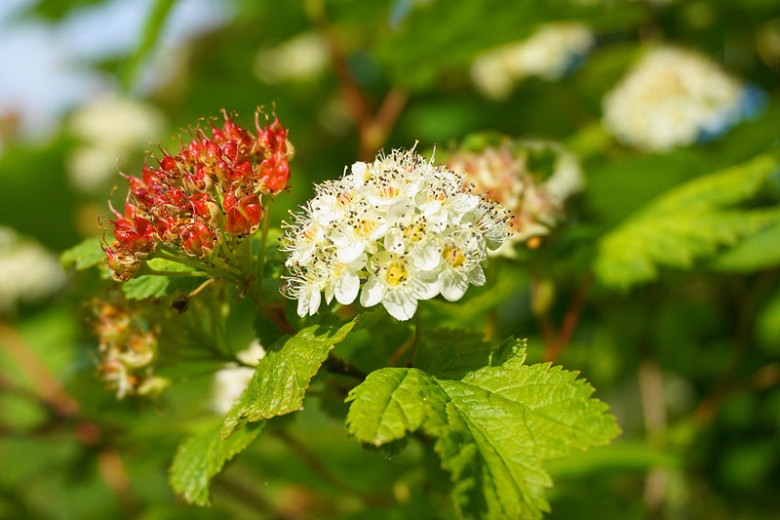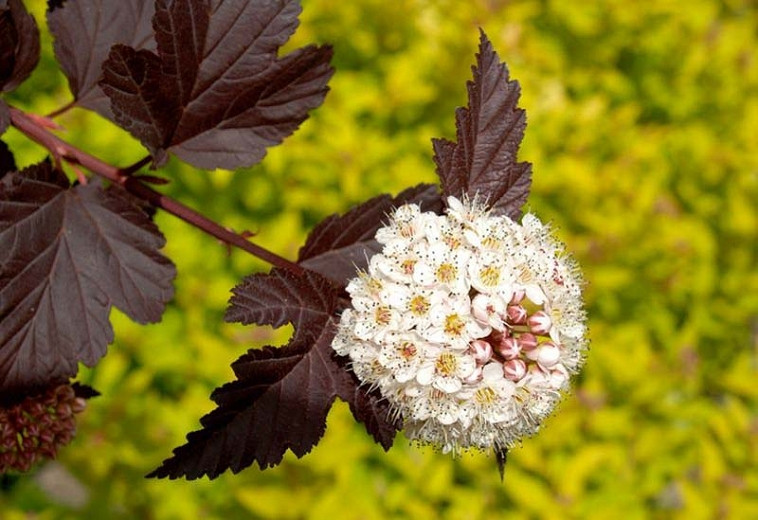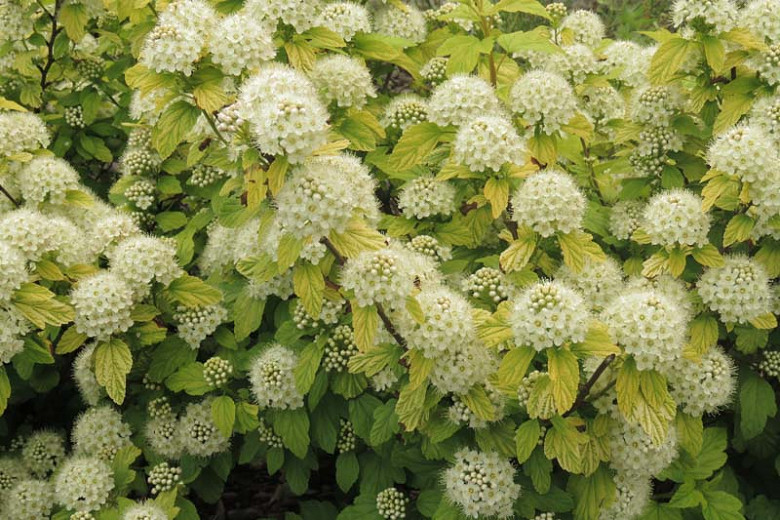Physocarpus capitatus (Pacific Ninebark)
Fast-growing, Physocarpus capitatus (Pacific Ninebark) is a dense deciduous shrub with an exquisite vase shape and incredibly decorative exfoliating bark. Profuse white flowers, with five petals and many red-tipped stamens, appear in dense, rounded clusters, 3-5 in. wide (7-12 cm), in late spring to mid-summer. They give way to drooping clusters of glossy red pods which turn brown and then splits open to release their seeds. Rich in nectar, the blossoms attract plenty of beneficial insects. The flowers contrast beautifully with the interesting maple-like foliage of green lobed leaves, which turns intense red to subtle rose-brown in the fall. Hidden by the foliage during the growing season, the bark is revealed in all its splendor later in the season, peeling into long irregular strips to display layers of reddish to light brown inner bark, providing winter interest. Providing good shelter and nesting sites for birds and small mammals, Pacific Ninebark is a splendid screening and hedge plant. Its extensive root system is also useful for retaining soil on slopes.
- Grows up to 5-10 ft. tall and wide (150-300 cm).
- This plant is easily grown in full sun to part shade in moderately fertile, humus-rich, slightly acidic, consistently moist, well-drained soils. Can become drought tolerant.
- Perfect as a specimen plant or planted in groups. Great for mixed shrub borders, hedges, and screens or banks and slopes.
- No serious pest or disease issues. Keep an eye out for powdery mildew. Deer resistant.
- May be cut back in winter to rejuvenate and encourage vigorous leaf production in spring.
- Propagate by seed or stem cuttings. 2-3 months of stratification may improve germination.
- Prune as required immediately after bloom
- Native to western North America from southern Alaska east to Montana and Utah, and south to central California.
Requirements
| Hardiness | 5 – 10 |
|---|---|
| Climate Zones | 2, 2B, 3, 3A, 3B, 4, 5, 6, 7, 8, 9, 14, 15, 16, 17, 18, 19 |
| Plant Type | Shrubs |
| Plant Family | Physocarpus – Ninebark |
| Exposure | Full Sun, Partial Sun |
| Season of Interest | Spring (Late)Summer (Early,Mid)Fall |
| Height | 5' – 10' (150cm – 3m) |
| Spread | 5' – 10' (150cm – 3m) |
| Spacing | 60″ – 120″ (150cm – 300cm) |
| Water Needs | Average |
| Maintenance | Low |
| Soil Type | Clay, Loam, Sand |
| Soil pH | Acid, Neutral |
| Soil Drainage | Moist but Well-Drained |
| Characteristics | Showy |
| Native Plants | United States, Alaska, California, Pacific Northwest, Idaho, Oregon, Washington |
| Tolerance | Deer, Drought |
| Attracts | Butterflies |
| Garden Uses | Banks and Slopes, Hedges and Screens, Rain Gardens |
| Garden Styles | Informal and Cottage |


